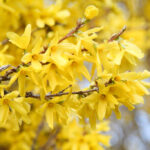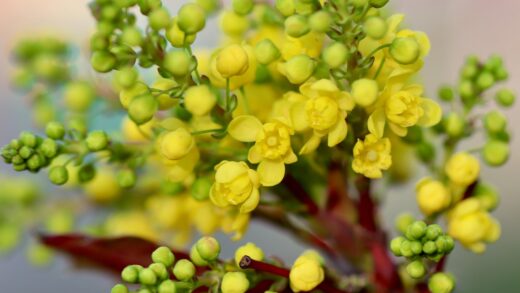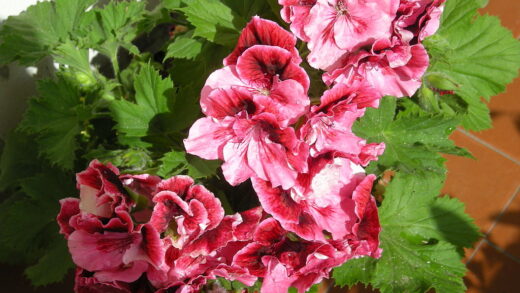Watering and fertilizing of the bunch-flowering tulip

The watering regimen for Tulipa praestans is a delicate balance, dictated by its life cycle and its inherent aversion to saturated soil. Proper hydration is most critical during the active growing season, which spans from the emergence of shoots in early spring through the period of foliage die-back after flowering. During this time, the plant is building its structure, producing flowers, and then storing energy for the following year. A consistent supply of moisture is essential to facilitate these energy-intensive processes. If natural rainfall is insufficient, typically less than 2-3 centimetres per week, supplemental watering is required to prevent the soil from drying out completely.
The goal when watering is to moisten the soil deeply to encourage a robust and extensive root system. Light, frequent sprinklings that only wet the surface of the soil are ineffective and can even be detrimental, as they encourage shallow rooting, making the plant more susceptible to drought stress. Instead, provide a thorough, deep soaking that allows the water to penetrate down to the level of the bulbs, which are typically 10-15 centimetres below the surface. A simple way to check is to dig a small hole near the patch a few hours after watering to see how far the moisture has permeated.
As the tulips enter their flowering period, maintaining consistent soil moisture becomes even more important. Water stress at this stage can lead to a shorter bloom time, with flowers fading and dropping their petals prematurely. After the flowers have faded, it is a common mistake to cease watering altogether. However, the plant is still actively photosynthesizing through its leaves to replenish the bulb’s energy stores. Continuing to water as needed for the four to six weeks it takes for the foliage to yellow and wither is crucial for ensuring a strong performance the following year.
Once the foliage has completely died back, the bulb enters its summer dormancy period. During this phase, the need for water is dramatically reduced. In fact, Tulipa praestans prefers a relatively dry summer dormancy, which mimics the conditions of its native habitat. In most temperate climates, natural rainfall will be sufficient, and supplemental irrigation should be stopped entirely. Excessive moisture during the summer dormant period is a primary cause of bulb rot and other fungal diseases, so it is vital to allow the soil to dry out.
The role of fertilizer in bulb health
Fertilizer acts as a vital supplement, providing the essential nutrients that Tulipa praestans needs to thrive, flower profusely, and perennialize successfully. The three primary macronutrients—nitrogen (N), phosphorus (P), and potassium (K)—play distinct roles in the health of the bulb. Nitrogen supports leaf growth, phosphorus is crucial for root development and energy transfer, and potassium regulates overall plant processes, enhances flower colour, and builds resistance to disease. For tulips, the emphasis should be on phosphorus and potassium, with a more moderate amount of nitrogen.
More articles on this topic
An excess of nitrogen is particularly detrimental to tulips. High-nitrogen fertilizers promote the growth of lush, soft foliage at the expense of bulb development and flowering. This weak, sappy growth is also far more susceptible to fungal diseases like tulip fire (Botrytis tulipae) and can attract pests such as aphids. Therefore, it is essential to choose a fertilizer that is specifically formulated for bulbs or flowering plants, which will have a balanced or low-nitrogen N-P-K ratio. Organic options like bonemeal are excellent sources of phosphorus, while sulphate of potash can supply necessary potassium.
The application of fertilizer provides the building blocks for the bulb’s future success. A healthy, well-nourished bulb will not only produce a spectacular floral display in the current season but will also have the resources to form strong offset bulbs. These offsets are the key to creating larger, more impressive clumps over time. By ensuring the parent bulb has access to adequate nutrients, you are directly investing in the expansion and long-term viability of your tulip collection, enabling it to naturalize and spread throughout the garden.
Without adequate nutrition, tulip bulbs will gradually deplete their stored energy reserves over a few seasons. This often results in a phenomenon where the tulips bloom beautifully the first year after planting but produce progressively fewer or smaller flowers in subsequent years, eventually leading to “blind” bulbs that only produce leaves. This decline is often mistaken for a lack of hardiness when it is, in fact, a simple case of nutrient deficiency. A consistent fertilization program is the key to breaking this cycle and ensuring a reliable and impressive display year after year.
The best time to fertilize
Timing is everything when it comes to fertilizing tulips, as the nutrients must be available in the soil when the plant’s roots are actively absorbing them. There are two primary windows of opportunity for effective fertilization. The first, and arguably most important, is at the time of planting in the autumn. Incorporating a granular, slow-release bulb food or a generous amount of bonemeal into the soil at the bottom of the planting hole provides a nutrient reservoir that the bulb can draw upon as it establishes its root system over the winter.
More articles on this topic
This initial application at planting provides the foundational phosphorus necessary for robust root growth, which is the cornerstone of a healthy plant. The slow-release nature of these fertilizers ensures that the nutrients are not washed away by winter rains but remain in the root zone, ready for uptake in the early spring as the soil warms and growth begins. This sets the stage for a vigorous growth cycle, ensuring the plant has the resources it needs from the moment it breaks dormancy.
The second key time to fertilize is in the early spring, just as the new shoots are emerging from the ground. An application of a balanced granular fertilizer scattered on the soil surface around the plants can provide a welcome boost for the developing leaves and flower buds. Alternatively, once the leaves have unfurled, a liquid feed high in potassium (like a tomato or comfrey feed) can be applied every few weeks until the flowers begin to fade. This liquid application provides readily available nutrients that give an extra push for vibrant, long-lasting blooms.
It is generally recommended to avoid fertilizing tulips late in their growing season, specifically after they have finished flowering. While it may seem logical to “feed the leaves,” the bulb’s ability to take up nutrients from the soil diminishes as it prepares for dormancy. An application of fertilizer at this stage is largely ineffective and can even be counterproductive, as the unused nutrients can leach into the environment or alter the soil chemistry in undesirable ways. The focus after flowering should be on allowing the leaves to photosynthesize, not on soil-based feeding.
Organic versus synthetic fertilizers
When choosing a fertilizer for your bunch-flowering tulips, you have the option between organic and synthetic products, each with its own set of advantages and disadvantages. Organic fertilizers are derived from natural sources, such as plant or animal matter. Examples include bonemeal, blood meal, fish emulsion, and well-rotted compost or manure. These materials release their nutrients slowly as they are broken down by microorganisms in the soil. This slow-release action is very beneficial for bulbs, as it provides a steady, gentle supply of nutrients over a long period and greatly reduces the risk of over-fertilizing or burning the plant’s roots.
Furthermore, organic fertilizers do more than just feed the plant; they also feed the soil. The application of organic matter improves soil structure, increases its water-holding capacity, and fosters a healthy ecosystem of beneficial microbes, fungi, and earthworms. This holistic approach builds long-term soil fertility, creating a sustainable and resilient growing environment for your tulips and other garden plants. For many gardeners, the environmental benefits and the focus on soil health make organic options the preferred choice for long-term cultivation.
Synthetic fertilizers, on the other hand, are manufactured chemical compounds that provide nutrients in a concentrated and readily available form. They are fast-acting and can provide a quick boost to plants, which can be useful for correcting specific nutrient deficiencies. The nutrient content (N-P-K ratio) is precisely stated on the packaging, allowing for very targeted application. For tulips, a synthetic granular fertilizer with a formula like 5-10-10 or 10-15-10 can be effective when used according to the manufacturer’s instructions.
However, synthetic fertilizers also have their drawbacks. Their fast-acting nature means there is a higher risk of over-application, which can burn plant roots and damage soil life. They do not contribute to the long-term health and structure of the soil in the way that organic matter does. Over time, the repeated use of synthetic fertilizers without the addition of organic material can lead to a decline in soil quality. Ultimately, a combined approach often yields the best results: using organic materials like compost and bonemeal to build healthy soil structure and long-term fertility, supplemented by a balanced synthetic fertilizer in the spring if a quick boost is needed.
Application techniques and precautions
Proper application technique is essential to ensure that your fertilizing efforts are effective and do not cause harm to the plants. When using granular fertilizers, whether organic or synthetic, it is important to apply them evenly and at the correct rate as specified on the product label. For established tulip plantings, the fertilizer should be scattered on the soil surface around the plants, not directly on the emerging leaves or shoots, as the concentrated granules can cause chemical burns on the foliage.
After applying a granular fertilizer to the soil surface, it is good practice to gently cultivate it into the top few centimetres of soil with a hand fork or cultivator. This helps to incorporate the fertilizer into the root zone and prevents it from being washed away by heavy rain. Following the application, watering the area thoroughly serves two purposes: it helps to move the nutrients down into the soil where the roots can access them, and it washes any stray fertilizer granules off the plant foliage, further reducing the risk of leaf burn.
When using liquid fertilizers during the spring growth period, always dilute them with water according to the package directions. Applying a liquid feed that is too concentrated is a common mistake that can rapidly damage or even kill the plant by “burning” its roots. It is also crucial to apply liquid fertilizer to soil that is already moist. Applying it to dry soil can cause the roots to absorb the solution too quickly, leading to shock and damage. Therefore, it is best to water the plants with plain water first, and then follow up with the diluted fertilizer solution.
Finally, a key precaution is to avoid letting fertilizer come into direct, undiluted contact with the tulip bulbs themselves. When planting in the autumn and adding fertilizer to the hole, always mix it into the soil at the bottom of the hole rather than placing the bulb directly on top of a pile of fertilizer. This creates a small buffer of soil that protects the bulb’s sensitive basal plate from potential chemical burn while still ensuring the developing roots will quickly grow into the nutrient-enriched zone. Careful application ensures that the fertilizer helps, rather than hinders, your tulips’ growth.

















